Note: I do not sell the TeensyDSC or any other electronics projects.
Long story short, I own a really nice 12″ Dobsonian telescope, but I live in an area of high light pollution. This makes it difficult to find many objects. I decided I wanted to add some digital setting circles (DSC) to my scope, but all the commercial solutions were $500+ and often had really crappy user interfaces.
After doing some research I realized that it wouldn’t be too difficult to attach two CUI AMT11 encoders ($30/each) to my telescope. I then wanted a way to use SkySafari on my iPad to locate objects with it’s DSC feature. This meant I needed a way to connect the encoders to my iPad over WiFi.
The initial phase will be an encoder-to-wifi bridge so I can use SkySafari with my AD12- similar to the $250 Astrodevices Nexus. I don’t have GoTo on my scope (honestly, I don’t feel the need for that right now and I’m not sure how easy it would be to add to my scope), but for a few dollars more, my design will be able to support 2x serial ports and camera shutter control- just like the Nexus. The only thing I’m not sure about support yet is USB connectivity to certain models of goto controllers.
One little feature I have planned is the ability to use a button on a remote (so you can hold it in your hand) to “lock” the encoder values. The idea is that when you’re doing a 2 star alignment, you can lock the values so you don’t have to worry about knocking the scope or anything while you reach over to the iPad and click a button. I’m open to other ideas as well, so feel free to make any suggestions. :)
The actual cost of my board + components for just the encoder-to-wifi feature should be around $100 and it’s all open source!
Here are some pictures of what the current board design (subject to change) looks likes:
For more info, check out Teensy DSC on Github or my blog posts with the TeensyDSC tag.

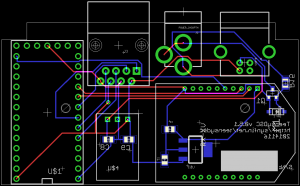
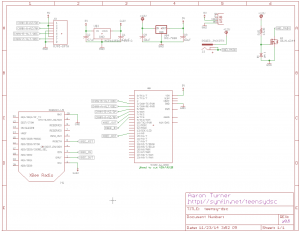
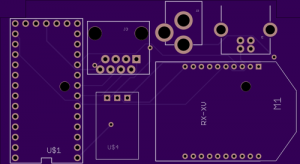
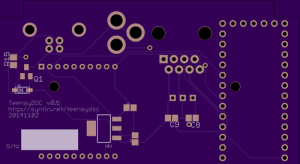
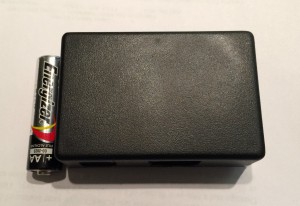
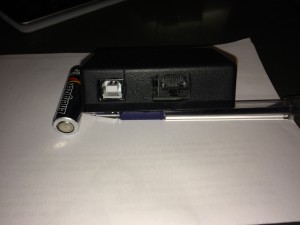
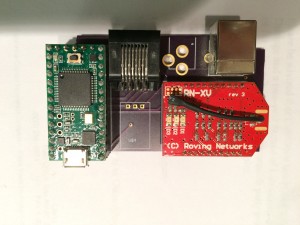
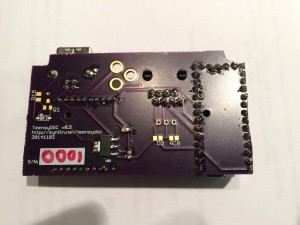
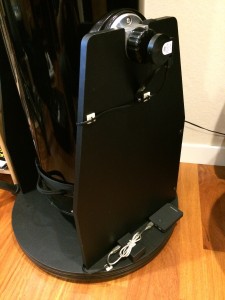
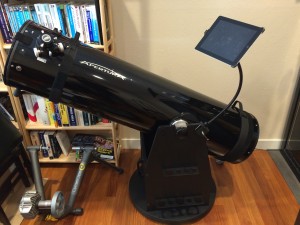
I was very interested in DSC that you have created.
I want to buy a finished product.
Please tell me Payment method and the price.
Hi Takito,
Price for a PCB with all the components soldered on and it pre-programmed for your telescope is $160 USD + shipping. I accept PayPal. For that price, I also include the small plastic enclosure that you see in the photos above, but without any cut outs for the ports- you’ll have to do that yourself.
Any plans for an Android version?
Assuming your Android device supports WiFi, it should work just fine.
Hi !
I came across this while looking for DSC ideas for my Z8. I know this is an old post but can you post some pics about how you mounted the CMT11s? The Alt looks like it is screwed on top of the knob. How about the Az encoder?
Did you use gears?
TIA
I used US Digital encoders and the Astrosystems mounting brackets
Thanks
Did you use the whole mounting kit from Astrosystems, or just parts of it.
In particular did you have to replace/reverse the centre bolt on the base so
to be able to attach the arm? Or did centre bolt stay in the original direction
with the knob on top. I am trying to figure out if the arm/gear can be attached
above or below the ball bearing/washers on the center bolt.
I used the whole kit. I would recommend you contact him via phone and place your order and NOT do it over the internet. If you don’t need the post/mount for the DSC computer you can save $$$ since he charges extra to ship the post.
The arm only holds the encoder body in place so it doesn’t rotate. The kit comes with a new T-nut and knob for the Az which allows mounting the encoder. For the Az what you want is the encoder to be fixed to the dob base and the encoder body attached to the rocker box. That way as you move the Az axis, the encoder can track the movement. For reliability, I had to use blue loctite on the Az bolt/knob so it didn’t slip when moving the scope- the bolt tends to loosen over time which ruins the accuracy.
If you have a drill press (or a steady hand + hand drill) and a 1″ drill bit you can drill out the center of one Alt knob yourself and not ship it to him for modification.
Thanks for the details. I am still figuring out the design, and was finding it hard to
figure out how to connect the encoder to the Az axis bolt given the knob on top setup of Zhumell.
Orion has the bolt reversed already and all the kits for Apertura/Zhumell seem to reverse the bolt so that the open end of the bolt is accessible for mounting. I was wondering if yours does it that way too.
It is also good to know about the blue locite and the phone order of parts.
Aaron:
I found your TeensyDSC project while looking for a Advansed Astromaster DSC for my old Celestron C8.
My eyes are not as good as they used to be but I still love to get the C8 out on clear nights.
I have some experience with arduino’s and have interest in your project as a alternative to the Celestron Advanced Astromaster DSC as they hav become rather hard to find. My question is is there coding changes that would be required to use your DSC on the C8 fork mount in polar alignment. Also I use Stellarium 0.15.1 on my laptop as my star guide, do you think the interface will work with it.
Assuming your C8 has encoders for RA/Dec and connected to the Astromaster via a RJ45 plug then the hardware should be compatible with the TeensyDSC. That’s because the TeensyDSC doesn’t understand RA/Dec or Alt/Az, but only “tics” on the encoder.
The bigger question is Stellarium. I don’t use Stellarium myself (I use SkySafari) and so I’m not familiar with it. However, I couldn’t find any way of telling it to connect to either an Orion Intelliscope or “Basic DSC” option like I can with SkySafari. TeensyDSC doesn’t emulate the protocol of the Astromaster DSC and isn’t compatible with Stellarium. Of course, I may just not of found the correct menu? Stellarium doesn’t seem that intuitive to me so that’s possible.
Found this page on the Stellarium WIKI page
http://stellarium.org/wiki/index.php/Telescope_Compatibility
TeensyDSC is not compatible with either the NextStar or AutoStar protocols.
Aaron:
I am interested in your TeensyDSC, what is the cost of product plus shipping to Hong Kong?
Sorry, it’s not for sale
I changed the eagle format of design.brd to gerber format. I would like to share the gerber to anyone who want it. If you want the file, please inform me via email.
I’m an electronics and home CNC kinda guy, and NOVICE stargazer. I was looking at converting my 10″ Dob into a Go-To scope, as I can never seem to find anything. I spend the night looking at … I dunno what I’m looking at.
However, it looks like a Push-To scope and some modern software would be an easier and entirely adequate option.
My concern is the number of quadrature counts, and the speed of the counts. For example, if I put a big “gear” on the base that drives a smaller gear on the encoder, I could easily get 60,000 to 100,000 counts for a full rotation.
At the speed that a person typically turns their scope, would this overwhelm the interrupt capability of the Teensy?
Thanks for any thoughts.
Alan
P.S. I do my own PCBs, and would be interested in looking at the Gerber files of your current boards.
Hey Alan,
So it took me a while to understand this myself, but you don’t need crazy 100,000 count encoders to get really good results.
Basically, in order to be able to take advantage of crazy high resolution encoders, you’d need a super accurate mount. That means _perfectly_ perpendicular and no sag at all. Unless you’re spending crazy $$$ on your scope, you don’t have that level of accuracy. It definitely doesn’t happen with your typical Orion/SkyWatcher/etc scope and even nice scopes like Obsession and Teeter aren’t perfect.
Also, if you want to go with gears, you need to have no slop and super precise or you are just introducing error. Remember, the accuracy of the system is limited to the least accurate component.
That said you can buy some US-Digital encoders which do 40,000 count per revolution and direct mount them. Frankly, this will be more accurate then you really need. On my old Apertura AD-12 and now Starmaster ELT, the 40K encoders are plenty good enough for find objects with my 9mm 100* EP. Usually though I use a wide angle EP like my 30mm 82* which makes it even easier. I use US Digital S2-10000-250-IE-D-D encoders. Note they market them as 10K CPR which equates to 40K after quadrature decoding.
If you want to go cheaper, checkout my ESP-DSC (https://github.com/synfinatic/esp-dsc) which is much, much cheaper to build and supports up to 2500CPR / 10,000 count which frankly is good enough. Remember, 360deg / 10,000 = 0.036deg of accuracy! How much more do you think you really need? :)
I don’t provide Gerber files, but all my code and PCB designs are open source and you can view/edit the designs in either KiCad (ESP-DSC) or Eagle (Teensy-DSC).
Thanks for the reply!
I wasn’t planning on super high resolution nor did I think I needed super high resolution.
But using the parts I had at hand (hobby CNC guy with encoders coming out of my ears), envisioning how I’d mount them and then doing some simple math, a zillion counts is what I came up with.
The plan was to use a 10″ diameter XL pulley mounted to the turntable of my 10″ scope, coupled by timing belt to a 10 tooth XL pulley on an 8,000 count encoder
10″ diameter pulley == 31″ circumference pully == 155 tooth pulley. 10 tooth encoder will turn 15.5 times for one full revolution of the turntable. 15.5 * 8,000 == LOTS of counts.
All this is stuff I have laying around (so a no cost experiment) AND stuff that’s kinda the right physical shape (so it would be easy to add).
I understand the “slop” issue, but I have a decent lathe and nice little CNC mill, so a “slop free” system should be possible.
The question was, will the Arduino be able to keep up, or do I need to go to a lower res encoder?
However, you may have indirectly answered that question, in that I also have an ESP8266 laying around waiting for a project that just never got started. So maybe I do use one of my lower res encoders …
Thanks again for the time!
Alan
I honestly don’t know how well the Teensy will keep up with higher resolution then the 40K encoders that I tested with.
Out of curiosity, what mill do you have? I’d love to get something like a PM-30: http://www.precisionmatthews.com/shop/pm-30mv/ and then CNC it.
Hello Aaron,
I am interested in buying a Teensy DSC. Please contact me for details.
Greetings
Mike
Hi Aaron,
I am interested in buying a Teensy DSC PCB. I might be interested in buying a complete Teensy DSC, how much is that?
Please contact me for details.
Thanks
Jeff
it’s not for sale